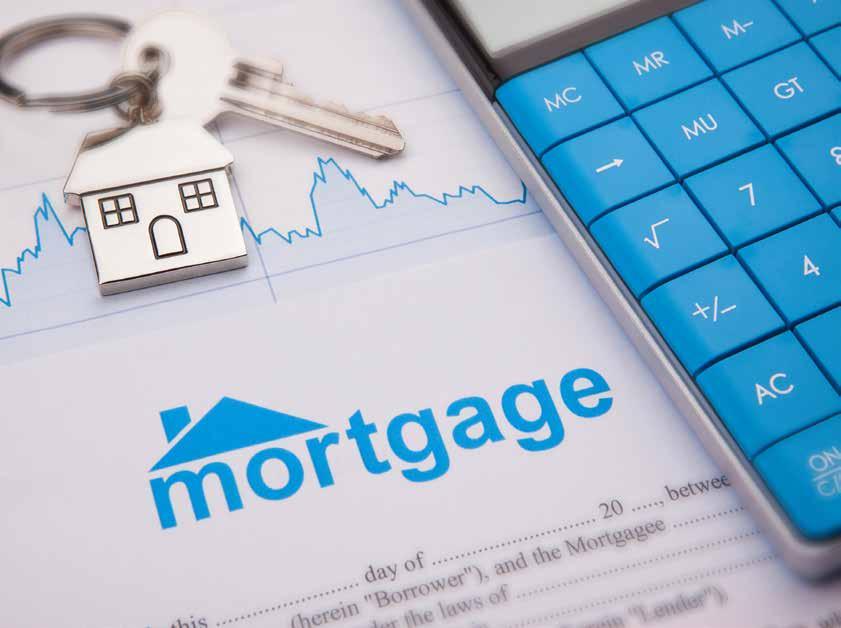
4 minute read
How Low Can You Go?
TAKE ADVANTAGE OF LOW- AND NO-MONEY-DOWN MORTGAGE LOAN PROGRAMS
Many would-be home buyers today feel down on their luck, down and out, and directionally downhill. And the reason is downright simple: They lack the needed down payment to purchase a property. After all, it’s a steep climb to reach the homeowner mountaintop when you’re expected to have 20% of the sales price salted away — as required by many mortgage lenders.
Advertisement

If you’re just starting your career, saddled with student or consumer debt, or lack the necessary saving skills, this hefty down payment prerequisite can seem like an impossible barrier.
But the truth is that you don’t always need to fork over 20%. Buyer-friendly loan programs actually exist that require little to no money down. If you qualify, that means not having to wait years until you can meet the 20% threshold. You can start building equity right away, plant roots in a desired community, and even begin raising a family in a home of your own sooner than you think. The key is learning the facts and knowing where to look for the right loans.
“Sadly, many home shoppers today have difficulty qualifying and affording a mortgage because they don’t have enough money saved for a down payment as well as the closing costs, which can run about 3% of the purchase price. What’s more, they have bad credit or their income is inconsistent,” says Dorothy Di Pisa, CPA and managing partner at Quincy, Massachusetts-located Di Pesa & Company, CPAs.
Unfortunately, even well-qualified buyer prospects don’t shop around thoroughly for lenders.
“They need to speak with more than one mortgage lender and focus on finding the best overall loan package — not just the lowest interest rate,” suggests Anna DeSimone, author of “Housing Finance 2020.”
CTW PHOTOS

Contributing to the problem is the fact that “many real estate agents don’t understand the variety of loan programs available or are confused about how they work,” says Phil Georgiades, chief real estate agent for San Diegoheadquartered FedHome Loan Centers.
That’s why homeowner hopefuls must do their homework and carefully research loan options, including the following low- and no-money-down programs: FHA loan The Federal Housing Administration provides a home loan that requires only a 3.5% down payment to eligible
borrowers and also allows down payment assistance loans from approved housing partnership agencies.
“Borrowers must have a minimum credit score of 580. Credit scores as low as 500 require a down payment of 10% or more,” DeSimone notes. “Also, your debt-to-income (DTI) ratio cannot exceed 43% to 50%.” (Your DTI is the percentage of your pre-tax monthly earnings designated to repay debt. Divide your total monthly debts by your total income and multiply by 100 to calculate your DTI).
Note that you may be forced to pay for mortgage insurance if your FHA loan exceeds a certain loan-to-value ratio. (LTV is a number that signifies the size of your loan versus the value of the home. Divide your loan amount into the home’s total value to calculate your LTV.)) Freddie Mac and Fannie Mae mortgages
Freddie Mac’s Home Possible loan and Fannie Mae’s HomeReady loan can each be had for 3% down.
“The down payment does not have to be from your own funds. These programs allow subordinate financing from approved housing partnership agencies to help cover your down payment and closing costs.
They also allow 105% total loanto-value financing, meaning you can purchase a home with no cash and also obtain an extra 5% to cover your upfront costs,” explains DeSimone. “They are also available to applicants with no credit score or limited credit history, although a minimum credit score of 620 is better.”
Both loans allow DTI ratios of 43% to 50%, with some restrictions. You may be required to pay mortgage insurance if your LTV exceeds 90%. VA and USDA loans Eligible veterans, service members, and qualified surviving spouses can pursue a Veterans Administration loan that boasts a 0% down payment. Most lenders require a minimum credit score of 620 and a 41% DTI.
“This loan can only be used for a primary residence that you will live in or your spouse will occupy if you are actively deployed,” says Marvin Smith, a credit coach with DKR Group in Atlanta.
If you’re looking for a primary residence within a specific rural or suburban area, you may qualify for a USDA loan with no money down.
“Your household income cannot exceed 115% of the median household income in your area, and your DTI can’t be higher than 50%,” Smith says. “If your USDA loan finances 100% of the purchase, you’ll have to pay a guarantee fee upfront and annually that amounts to 1% of the home’s purchase price, which can be rolled into your loan amount.” Other Options Additionally, you may be able to obtain help from down payment assistance programs in your area (check out downpaymentresource.com for details).
“Many state and local housing partnership agencies offer additional financing to help cover your costs,” DeSimone says.
© CTW FEATURES


